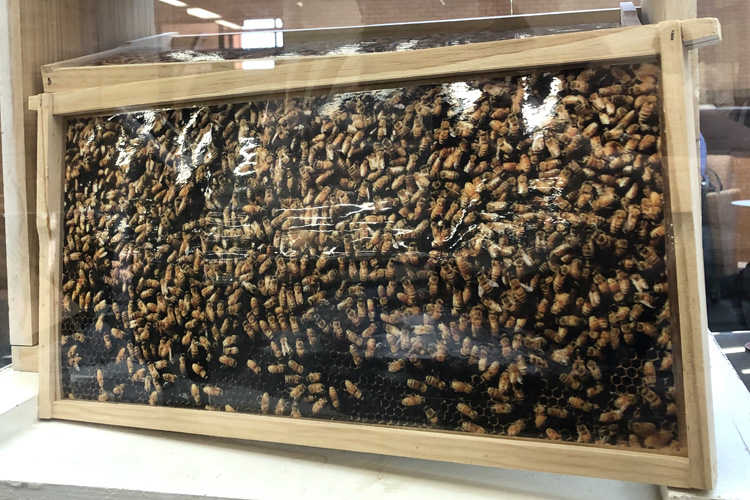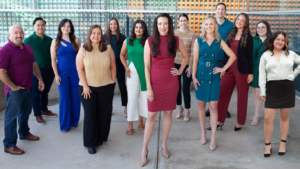The Environment Arizona website shows that millions of bees are dying due to global warming, bee-killing insecticides, parasites and habitat loss causing bees to get closer to extinction.
According to the Arizona State University website, the Seed Library can help the bees by providing a proper food source for them and promoting biodiversity by having a wide array of plants and flowers that students can plant on and off campus.
In the past few years, beekeepers have lost approximately 30% of honeybee colonies each winter. Bees pollinate 71 of the 100 crops that provide 90% of the words food.
Librarian Rene Tanner started the Seed Library a few years ago providing students free seeds they can check out and use to garden on and off campus. Tanner decided to start her own seed library after a woman won an award for her seed library in Pima County.
“There are simple things that we can do even here in our urban environment,” Tanner said. “Just planting those wildflower seeds and creating those little habitats.”
Cahit Ozturk, Manager of the ASU Honey Bee Research Lab is currently studying how certain elements affect bees such as diseases, pesticides and artificial chemicals, temperature and the overall behavior of bees. Bees are also placed in controlled environments to check on how they react, Ozturk said.
“We are working on behavior like learning and gardening because bees are declining,” Ozturk said. “If you don’t know the material you can’t help them. If you understand their behavior, you can diagnose well if they have issues. We are trying to learn or improve some information about the behavior and we are testing them and observing their behavior.”
Syeda Umar, member of the Barrett Sustainability club utilizes the seed library for the Sustainability club and personal farming at home. The seed library is completely free and it is financially supported in the library’s budget, Tanner said.
“It’s really nice because they have seeds ranging from marigolds to Swiss chard,” Umar said. “My family, has a couple of plots of land for gardening in Phoenix. I’ve been able to use some seeds that I’ve gotten from here in my own area.”
In addition to the Seed Library, Noble library is currently holding the exhibit until Oct. 13. The exhibit includes 3D models of a beehive, bee anatomy, a model of a fake bee colony, information and ways people can help.
The exhibit was put together by Ozturk, Tanner and shift supervisor, Andrew Misler. After Misler saw the connection between the bees and seed library, they decided to add this exhibit, Tanner said.
“I really felt like it was a problem that I wanted to educate people about,” Tanner said. “I wanted to make them aware of it but not in a way that was so overwhelming that they didn’t want to look at it. I feel like so often we are faced with really big problems but they feel so big that we can’t do anything where we feel helpless. I didn’t want people to feel that way. I want them to feel like, there’s something really easy they can do to help.”
According to the New York Bee Sanctuary there are small steps people can do to save the bee population such as not using synthetic herbicides, pesticides or fertilizers, planting plants that can be used for pollination, avoid weeding and not planting lawns.
“ Not only is it important to protect bees because of the way that they help pollinate various flowers, plants, vegetables and fruits and by doing that they help the biodiversity,” Umar said. “These are living creatures that have every right to exist and you know, be around because it’s their environment as well as ours.”




